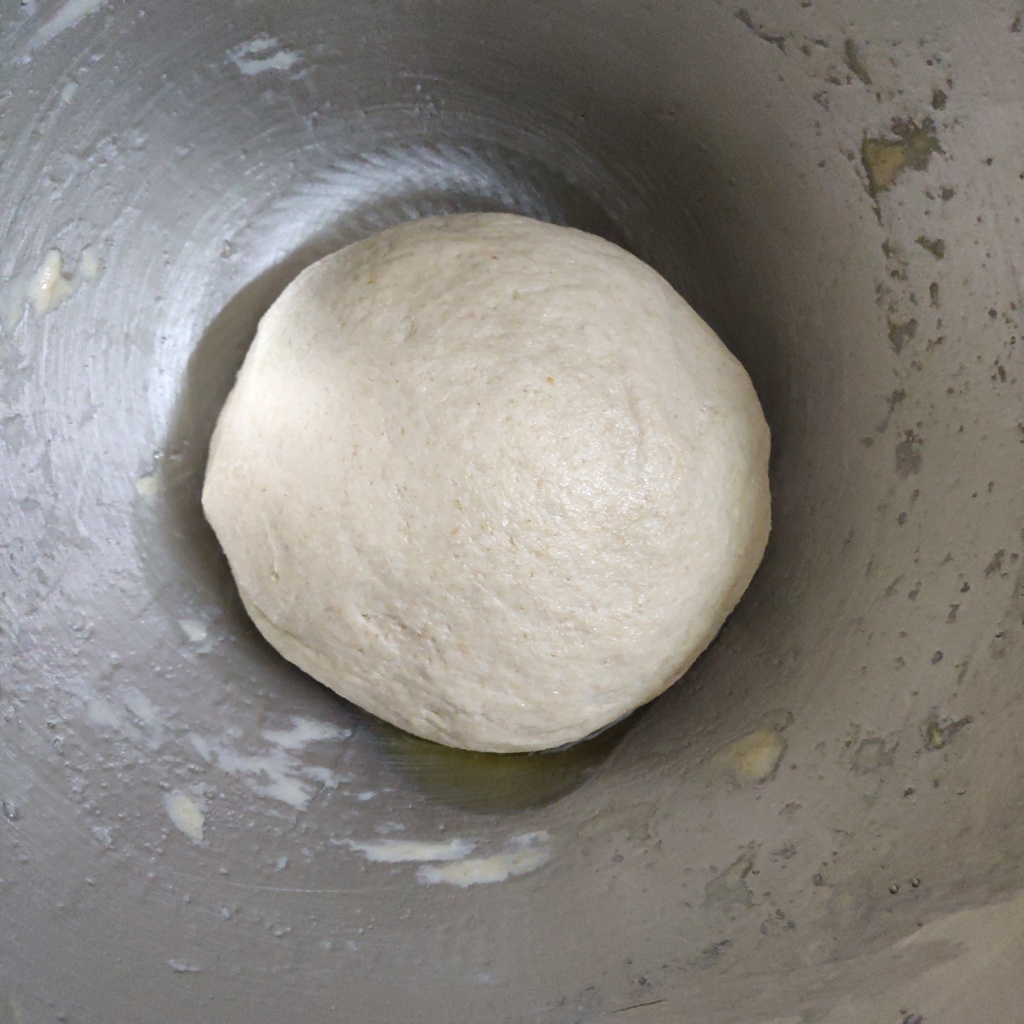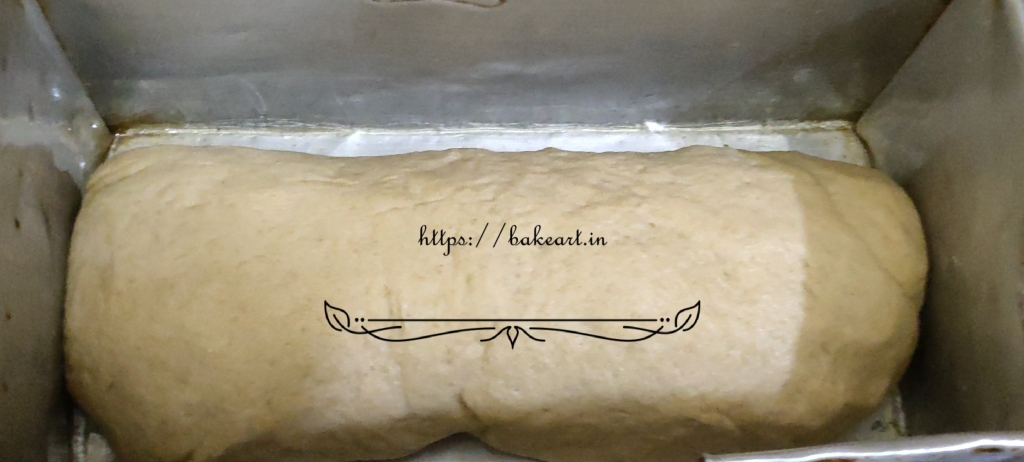This is a basic bread recipe that you can make at home with minimal ingredients, especially at a time like this when we’re all trying to cook at home as much as possible. Though, all Indian households make fresh chapattis everyday, bread has as much become a part of our daily food. Do try this very simple recipe at home.

Ingredients
- Organic whole wheat flour – 250 grams
- Vegetable oil – 30 grams.
- Luke-warm water – as needed
- Organic rock salt – 1 teaspoon
- Active dry yeast – 2 teaspoons
- Organic cane sugar or date paste – 1 teaspoon
Equipment
- Stand mixer with a dough hook
- Measuring spoons
- Weighing scale
- Probe thermometer
- Oven
- Baking tins
- Board and serrated knife
- Wet towels for covering dough and baked bread
- Baking brush to use for greasing oil
Method
1. Bloom the yeast. In your mixing bowl add 50 grams of lukewarm water (110f) and stir in the date paste or sugar. Add yeast and mix till the mixture becomes pasty. Cover and leave the yeast to froth and bubble for about 10 minutes. This let’s you know if the yeast you are working with is alive or not so don’t skip this step.
2. Then add in the flour and salt . Salt should not come in direct contact with the yeast so mix in in the flour before adding to the yeast.
3. Add in water. You may need less or more water depending on your climatic conditions such as humidity and the nature of flour.
4. Form a loose dough. This should be a soft dough and should hold it’s shape when formed into a ball. We are looking for a well hydrated dough. This means that the dough should be made using ample water and should not be dry. At the same time, take care that the dough does not become like a wet slurry and can be formed into a ball that is able to hold its shape.

5. Let this dough rest in a greased bowl, covered with a wet kitchen towel, in a warm place for an hour or until double in size.
6. Punch the dough and deflate it. Roll out the dough into a rough rectangle and roll it into a tight sausage shape of a length that fits your baking tin. For this amount of flour, we will need to use a small tin. Make sure that your bread tin is well greased before you place the dough sausage into it.

7. Pre heat oven to 210C and place the bread pan with the dough in it covered with a wet cloth on top of the heating oven.
8. Let the dough rise for the second time till it again doubles. Brush your bread loaf with oil on the top taking care not to accidentally deflate the dough.

9. Bake this bread loaf into the preheated oven for about 30 minutes at 210C. Your bread is done when the loaf browns, the crust on top becomes hard and crisp and the internal temperature of the bread reaches 200-210F.

10. Tip your baked loaf on to a cooling rack which is slotted at the bottom to ensure air circulation. Let the bread cool at room temperature for at least an hour before you slice into it.

Recipe notes :
1. Blooming the yeast is an important step that lets us know if the yeast is active and will be able to ferment your bread. Usually good yeast starts frothing in as less as 2-3 minutes. In case your yeast mixture does not froth, discard it and try with a different batch of yeast.
2. While working with whole-wheat flour, when making the dough we are looking at high hydration. This refers to water content in the dough. Typically in my experience the weight of water used should be between 80% of or equal to the flour weight. Your dough should not become a wet slurry but it should be sticky.
3. Handling a sticky dough is challenging. An easy way to do this is to oil your hands. By doing this the dough does not stick to your fingers.
4. I haven’t specified a tin size for this recipe. Ideally a small rectangular tin would be best suited . I recommend a 20 cm*11 cm tin. But I have baked this recipe successfully in larger and also differently shaped tins depending on availability.
5. As tempting as it might be never slice into a hot bread loaf. Allow it at least an hour to cool down. Store your bread wrapped in a wet (wrung out) cotton or muslin cloth to keep it soft.
